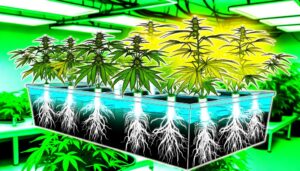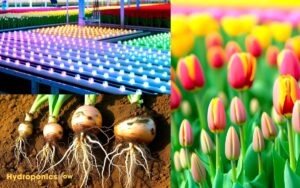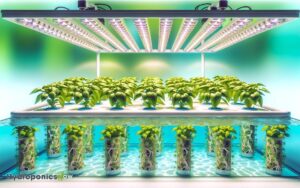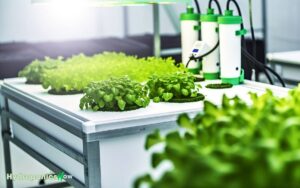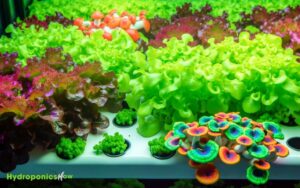7 Steps for Long After Planting to Transplant Into Hydroponic
You should transplant your seedlings into a hydroponic system when they have developed 2-4 true leaves and display a robust root structure with white, fibrous roots.
Guarantee the seedlings are approximately 2-3 inches in height and have healthy, thick stems. Conduct the transplant process gently to avoid damaging the roots.
Maintain ideal growing conditions, including a pH level of 5.5-6.5 and proper nutrient solution concentration. Address signs of stress, such as leggy growth or discoloration, before transplanting.
Adhering to these guidelines will result in successful acclimation and growth. There’s more to explore about ensuring hydroponic success.
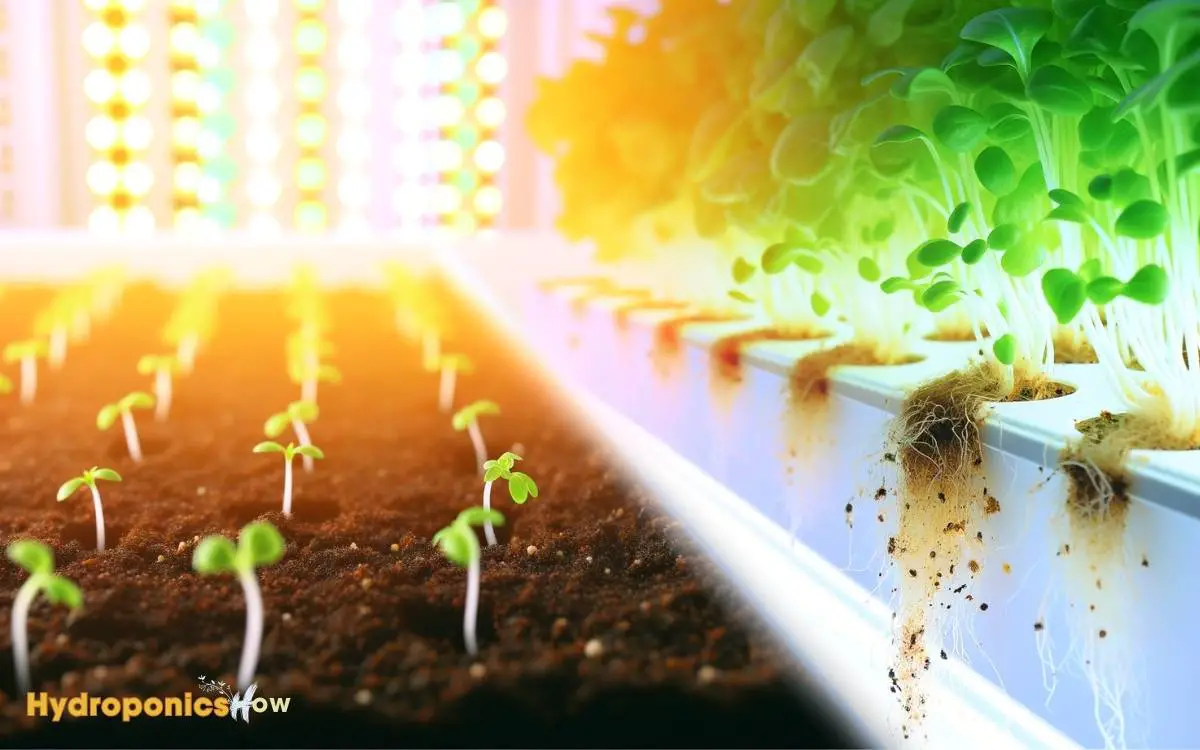
Key Takeaways
Germination and Early Growth
Germination marks the initial phase where seeds absorb water, activate metabolic processes, and begin radicle emergence. You’ll see the seed coat rupture as the radicle, the embryonic root, pushes through.
This process, known as imbibition, is essential for triggering enzymatic activity that converts stored food into usable energy.
Guarantee favorable conditions: maintain temperatures between 20-25°C and provide adequate moisture without waterlogging. Oxygen is crucial for cellular respiration, so ensure good aeration.
Once the radicle anchors into the growing medium, cotyledons, or seed leaves, will emerge. These provide the initial energy for further growth until photosynthesis starts.
Monitor closely for any signs of damping-off, a fungal infection that can decimate seedlings. Proper care during this stage guarantees robust early growth.
Identifying True Leaves
As seedlings progress, you’ll notice the emergence of true leaves, which are distinct from the initial cotyledons and signify the plant’s readiness for more advanced nutrient uptake.
True leaves typically have a more complex structure, including a vein pattern different from the smooth, oval cotyledons. These leaves are important for photosynthesis and nutrient absorption, preparing your plant for the hydroponic environment.
Here’s a quick comparison to help you identify true leaves:
| Feature | Cotyledons | True Leaves |
|---|---|---|
| Shape | Oval or round | Varied, often lobed |
| Vein pattern | Simple, parallel | Complex, reticulate |
| Function | Initial nutrient source | Photosynthesis, growth |
Identifying these true leaves ensures you’re transplanting at the best time for hydroponic success.
Root Development Indicators
Evaluating root development is crucial for guaranteeing your seedlings are robust enough for transplantation into a hydroponic system.
You’ll want to observe the root system for several key indicators. First, check for a dense network of white, fibrous roots; this suggests healthy growth and nutrient uptake capability.
Avoid transplanting if the roots are brown or slimy, as these are signs of root rot or disease. Ensure roots have sufficiently penetrated the growth medium, forming an intricate matrix.
Additionally, look for root tips, which indicate active growth.
Optimal Seedling Size
Determining the ideal seedling size is crucial for ensuring successful transplantation into a hydroponic system. You should look for seedlings that have developed two to four true leaves, as this indicates sufficient photosynthetic capacity and resilience.
The stem should be robust, approximately 2-3 inches tall, ensuring structural integrity. Roots need to be white and fibrous, signaling a healthy root system capable of nutrient uptake.
Avoid seedlings that are leggy or have discoloration, as these are signs of stress or nutrient deficiency. Ensuring your seedlings are neither too young nor too mature will facilitate acclimation and growth in the hydroponic environment.
Preparing for Transplant
Before transplanting your seedlings into the hydroponic system, thoroughly clean and sterilize all equipment to prevent contamination and maintain peak growth conditions. Use a mild bleach solution or specialized hydroponic cleaner for sterilization.
Make sure that the pH and electrical conductivity (EC) levels of the nutrient solution are at their best. Prepare the seedlings by gently removing them from their initial substrate, being mindful not to damage the roots.
- Check pH levels: Confirm the nutrient solution is between 5.5 and 6.5.
- Sterilize tools: Use a 10% bleach solution to clean all tools.
- Inspect roots: Look for healthy, white roots without rot.
- Hydrate seedlings: Pre-soak roots in a mild nutrient solution.
- Set up grow lights: Adjust lighting to the most suitable intensity for seedlings.
Conclusion
You’ve navigated the labyrinth of germination and early growth, identified true leaves, and monitored root development. Now, with seedlings of ideal size, you’re ready to transplant them into your hydroponic system.
Follow these steps precisely, and your plants will flourish as if they were on botanical steroids. Remember, preparation is key ensure your hydroponic setup is primed for success. Monitor nutrient levels closely and adjust them according to your plants’ specific needs to promote optimal growth. It’s also essential to flush hydroponic plants properly to prevent nutrient buildup and ensure a clean growing environment. Regular maintenance and attention to detail will keep your system running smoothly and your plants thriving.
With scientific precision, your thriving plants will be a proof of your meticulous care.

